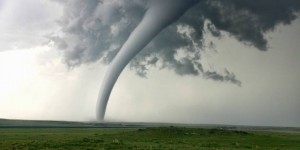Severe thunderstorms and tornadoes are one of Iowa’s most common hazards. That’s why it is important to prepare for these types of emergencies. Do you know what to do when severe weather affects your workplace? How do you know when it is time to seek shelter and where to go? Who gives you the all clear to return to your work area?
These are the types of questions and procedures you can check with the Annual Tornado Drill scheduled for Thursday, March 24, 2016 at 10:00 a.m. The drill is held in conjunction with the National Weather Service’s Severe Weather Awareness Week. It’s a great opportunity for employees, students and guests, to review their weather procedures. This drill is statewide and all persons in Iowa are encouraged to participate.
The drill will proceed as follows:
10:00 am: Tornado Watch (drill) given over NOAA Weather Radio. NO SHELTERING REQUIRED.
10:20 am: Tornado Warning (drill) given over NOAA Weather Radio. EVERYONE WILL PROCEED TO DESIGNATED SHELTERS IMMEDIATELY.
10:30 am: All Clear (drill) given over NOAA Weather Radio. EVERYONE RETURN TO WORK STATIONS.
Severe Weather terminology:
Watch: A National Weather Service product indicating that a particular hazard is possible, i.e., that conditions are more favorable than usual for its occurrence. A watch is a recommendation for planning, preparation, and increased awareness (i.e., to be alert for changing weather, listen for further information, and think about what to do if the danger materializes).*
Warning: A product issued by National Weather Service local offices indicating that a particular weather hazard is either imminent or has been reported. A warning indicates the need to take action to protect life and property. The type of hazard is reflected in the type of warning (i.e., tornado warning, blizzard warning, etc.).*
Please make sure you know where your shelter location is prior to this drill. If you are not sure about the workplace or schools procedures you should follow in times of Weather Watches and Warnings, talk to your supervisor. Officials ask you to not take the drill for granted. Use the thirty minutes of this exercise to make sure you know where to go, and the steps to take, when severe weather strikes.






